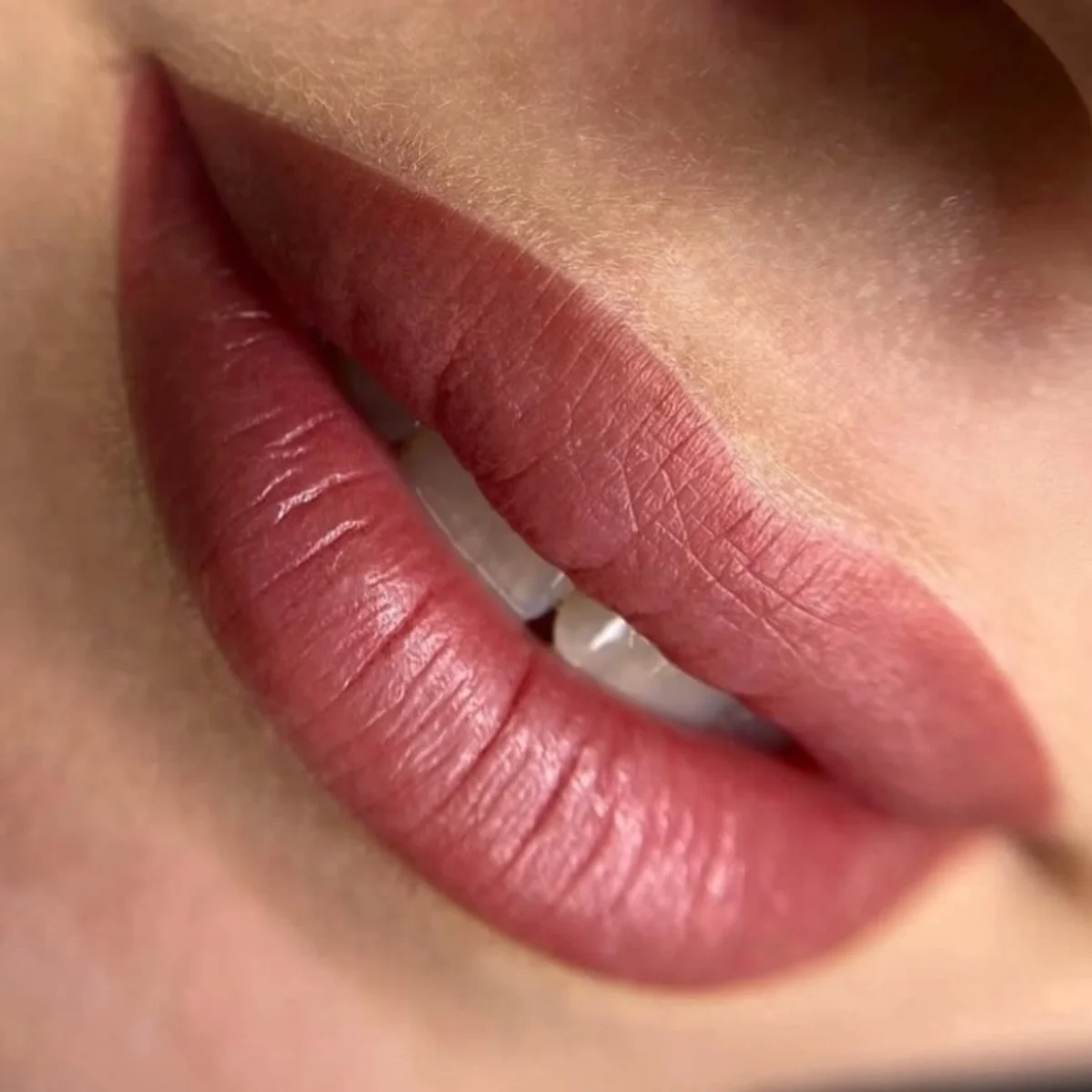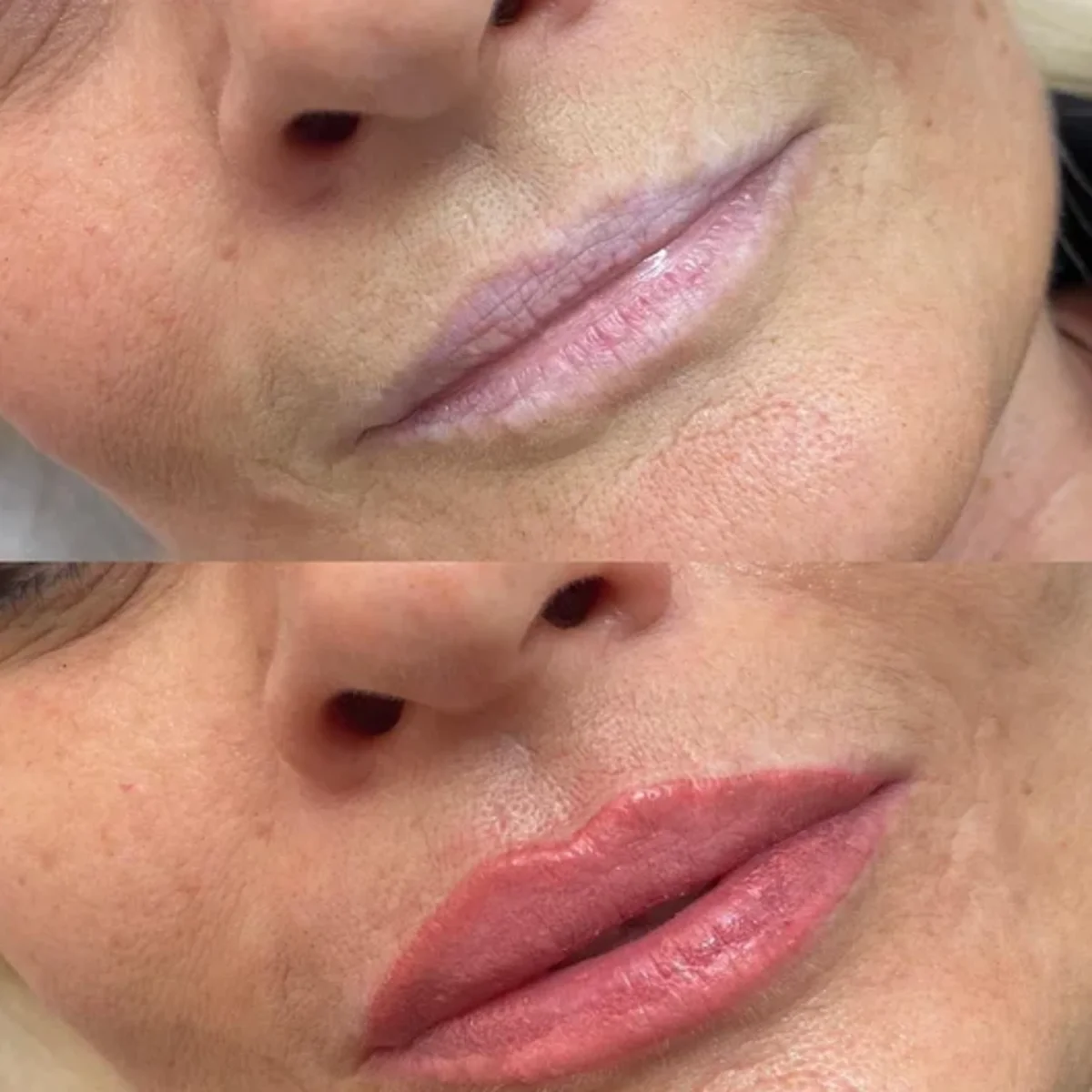Lip tattooing is a popular alternative for those looking to enhance the volume and shape of their lips without using dermal fillers. This semi-permanent cosmetic treatment is relatively painless and requires minimal aftercare, making it a preferred option for many. If you're undecided between lip tattooing and lip fillers, we'll provide all the information you need to make an informed decision.

Learn about lip tattoo treatment
Many women choose lip tattoo treatments to enhance their lips as they age. This procedure uses smudge-proof colour to redefine the lips and add symmetry. A cosmetic specialist implants pigment with a fine needle between the epidermis and dermis to build layers of colour. The treatment provides natural-looking results, restores colour to pale lips, corrects imbalances, improves pigmentation, and reduces the appearance of scars.
What distinguishes a lip tattoo from lip filler?
Choosing a lip tattoo over filler provides longer-lasting results. Dermal fillers add volume and enhance lips, while lip tattooing offers a subtle look for fuller, more defined lips. With lip tattooing, you can enjoy a natural lip colour without needing to constantly reapply lipstick or lip liner. Add a lip gloss for a fresh look throughout the day.
Advantages of lip tattooing
This treatment is suitable for individuals looking to enhance lip pigmentation, shape, and fullness without injections or multiple makeup products. It can provide a natural-looking vibrancy to the lips, especially for those who may have lip irritation from traditional makeup or struggle with defining their lip shape. Additionally, it can help add a youthful appearance and complement facial features, making it a good choice for those with thin lips seeking definition and a more rounded cupid's bow.
Lip tattoo vs. lip filler: which lasts longer?
The longevity of a lip tint tattoo varies based on factors such as age, skin type, skincare routine, and aftercare quality. Typically, it lasts two to three years before gradually fading and lightening. Harsh exfoliating products and sun exposure can accelerate the fading process. Yearly touch-up sessions are advised to maintain the desired lip shade.
Non-permanent dermal fillers offer a temporary way to plump up your lips. Results typically last six to nine months before your lips gradually return to their original shape. Remember that dermal fillers cannot change the colour or shade of your lips, so a lip tattoo may be a better option if this is a significant concern for you.
Healing a lip tattoo
After getting a lip tattoo, the healing process takes time. You may have dryness, tenderness, or swelling, but this should only last up to 10 hours. La Klinic provides aftercare formulas with vitamins A and E to ensure good healing and satisfactory results. Our gentle European micropigmentation device helps prevent blisters or scabbing.
After your treatment, it is normal for the colour intensity of your lips to increase, but rest assured that the pigment will fade up 40% and settle in, enhancing your natural lip colour.
A topical anaesthetic is applied to numb the lips during cosmetic treatments to ensure a pain-free experience. The technician will then recommend the best colour combination to complement your natural features and skin tone, with individualized colour suggestions based on the desired look, such as blush pink or dark red.
The lip tattoo procedure involves shaping and colouring the lips, applying anesthetic for comfort, and taking around 2.5 hours to complete. Individuals with a history of cold sores are advised to take antiviral medication before the treatment to prevent outbreaks.

Talk to experts to decide between a lip tattoo or filler
Our staff have received advanced training in Europe for cosmetic and medical tattooing treatments, ensuring they are skilled and up to date with the latest micro pigmentation technology. We use vegan, organic, and hypoallergenic pigments tested in independent laboratories to guarantee they are free from heavy metals with carcinogenic properties.